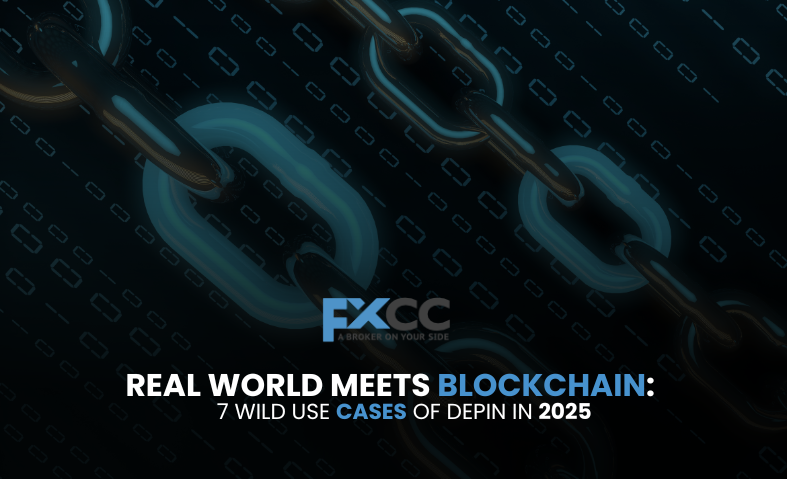What’s the Buzz About DePIN?
Imagine the physical things we use every day – internet networks, energy grids, even transportation – being powered and owned by regular people, all thanks to blockchain technology. That’s the core idea behind Decentralized Physical Infrastructure Networks, or DePIN. Instead of giant corporations controlling everything, DePIN uses tokens and incentives to build and maintain these vital infrastructures in a more distributed and transparent way. By 2025, DePIN isn’t just a futuristic concept; it’s starting to show up in some pretty surprising and impactful ways. Let’s dive into seven of the wildest use cases you might see taking off.

1. The People’s Internet: DeWi and Beyond
Think about your home Wi-Fi. You pay a big company every month for internet access. What if you could earn money by sharing your Wi-Fi with others, and contribute to building a larger, more resilient internet network? That’s the promise of Decentralized Wireless (DeWi). Projects are emerging that reward individuals for deploying and running small wireless hotspots, creating a people-powered internet that can reach even remote areas where traditional providers don’t go. In 2025, expect to see more of these community-driven networks popping up, offering affordable connectivity and challenging the dominance of big telecom. This could be especially impactful in places like where access to reliable internet might be limited.
2. Charging Up the Future: Decentralized Energy Grids
The way we get and use electricity is changing. The adoption of renewable energy technologies, such as solar panels, is on the rise. DePIN can play a role in building smarter and more decentralized energy grids. Imagine neighbors with solar panels selling excess energy directly to each other through a blockchain-based platform, without needing a central authority. DePIN projects are working on creating these local energy marketplaces, making the grid more resilient, sustainable, and potentially cheaper. By 2025, you might see pilot programs where communities are managing their own energy flow using DePIN technology.
3. Sharing the Ride, Differently: Decentralized Transportation
Ride-sharing services are popular, but they’re controlled by a few large companies. DePIN offers a vision for decentralized transportation networks. Imagine a platform where drivers and riders connect directly, without high fees taken by a middleman. This could involve everything from car-sharing to scooter rentals, all managed on a blockchain. In 2025, we might see the early stages of these decentralized transportation options, potentially offering more competitive pricing and greater control for both drivers and users.
4. Mapping the World, Together: Decentralized Mapping Networks
Traditional mapping relies on large corporations collecting and updating geographical data. DePIN is enabling the creation of decentralized mapping networks where individuals contribute by using specialized devices or even their smartphones to gather location data. They get rewarded with tokens for their contributions, creating a constantly updated and more comprehensive map that isn’t controlled by a single entity. By 2025, these community-driven maps could become valuable resources for navigation, logistics, and even disaster response.
5. Storing Data, Securely and Everywhere: Decentralized Storage
We rely heavily on centralized cloud storage providers. Through DePIN, individuals can offer their surplus hard drive space for rent, creating a decentralized storage solution. This creates a more distributed and potentially more resilient storage network. Your data isn’t sitting in one giant data center; it’s spread across many different computers, making it harder to censor or lose. In 2025, expect to see wider adoption of decentralized storage solutions for individuals and even businesses looking for more secure and private options.
6. Sensing the Environment, From the Ground Up: Decentralized Sensor Networks
Collecting data about our environment – air quality, temperature, traffic flow – is crucial for making informed decisions. DePIN is enabling the deployment of decentralized sensor networks. Individuals can host small sensors that collect data and get rewarded with tokens. This can create a much denser and more granular understanding of our surroundings than traditional, centrally managed sensor networks. By 2025, these networks could provide valuable real-time data for everything from environmental monitoring to smart city management, potentially even helping communities in areas like Oghi City track important environmental changes.
7. Decentralized Science: Powering Research with the People
Scientific research often requires significant computing power and data storage. DePIN is exploring ways to create decentralized platforms where individuals can contribute their unused computing resources or share research data, all incentivized by tokens. This has the potential to broaden access to research infrastructure and speed up scientific breakthroughs. In 2025, we might see the early stages of these decentralized science initiatives, opening up new avenues for collaboration and innovation.

The Bottom Line
DePIN is more than just a trendy buzzword. It represents a fundamental shift in how we build and interact with the physical infrastructure that underpins our modern lives. By leveraging blockchain technology and token-based incentives, DePIN is empowering individuals to contribute to and benefit from these networks in new and exciting ways. While still in its early stages, the potential of DePIN to create more resilient, accessible, and equitable infrastructure is huge, and by 2025, we’re likely to see some truly wild and transformative use cases emerge in the real world.


